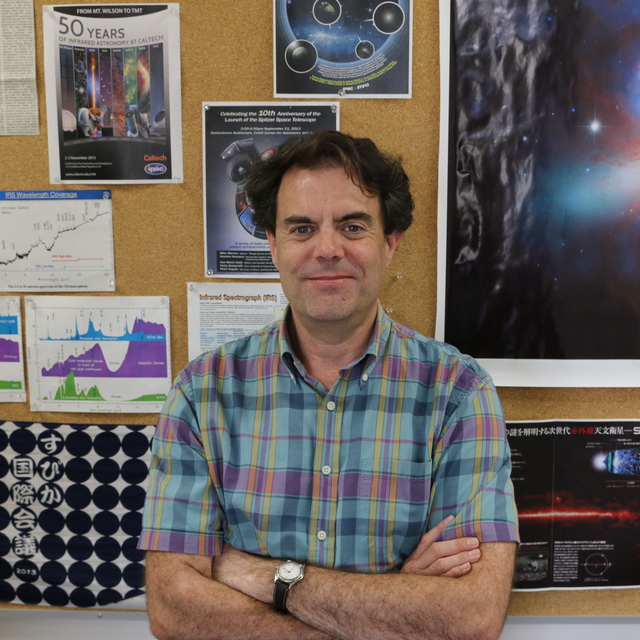June
2017
•
2017ApJ...842....4A
Authors
•
Abdullah, A.
•
Brandl, B. R.
•
Groves, B.
•
Wolfire, M.
•
Calzetti, D.
•
Croxall, K.
•
de Looze, I.
•
Kennicutt, R. C.
•
Sandstrom, K. M.
•
Armus, L.
•
Dale, D. A.
•
Galametz, M.
•
Herrera-Camus, R.
•
Hunt, L. K.
•
Smith, J. D.
•
Tielens, A. G. G. M.
Abstract
•
With its relatively low ionization potential, C+ can be found throughout the interstellar medium (ISM) and provides one of the main cooling channels of the ISM via the [C II] 157 μm emission. While the strength of the [C II] line correlates with the star formation rate, the contributions of the various gas phases to the [C II] emission on galactic scales are not well established. In this study we establish an empirical multi-component model of the ISM, including dense H II regions, dense photon dissociation regions (PDRs), the warm ionized medium (WIM), low density and {G}0 surfaces of molecular clouds (SfMCs), and the cold neutral medium (CNM). We test our model on ten luminous regions within the two nearby galaxies NGC 3184 and NGC 628 on angular scales of 500-600 pc. Both galaxies are part of the Herschel key program KINGFISH, and are complemented by a large set of ancillary ground- and space-based data. The five modeled phases together reproduce the observed [C II] emission quite well, overpredicting the total flux slightly (about 45%) averaged over all regions. We find that dense PDRs are the dominating component, contributing 68% of the [C II] flux on average, followed by the WIM and the SfMCs, with mean contributions of about half of the contribution from dense PDRs, each. CNM and dense H II regions are only minor contributors with less than 5% each. These estimates are averaged over the selected regions, but the relative contributions of the various phases to the [C II] flux vary significantly between these regions.
Links




